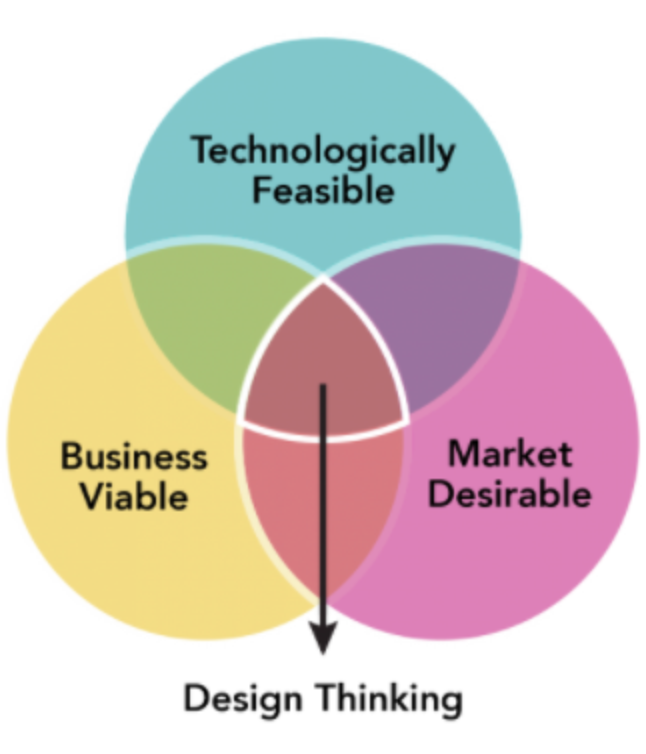What is Design Thinking?
When it comes to research, we understand that it can seem daunting at first, particularly if it’s all brand new to you. But it’s also something that we believe is so vital and fundamental to innovation and business, that we think everyone should do it. That’s why we want to take things back to basics, and share all of our knowledge around the topic, in a way that we hope everyone can understand, and that makes it as accessible as possible.
Over the course of the coming weeks and months, we’ll be answering common questions that we get asked around design, users and research, as part of our new series ‘Insights for Innovation: Simplified’.
This week we’ll be looking at design thinking; explaining what it is, what models there are, and why businesses should use it.
What is design thinking?
Design thinking is a framework used to guide the creation of products or services that solve problems.
It’s key aim is to understand and empathise with the target user of a product or service, keeping them involved throughout the whole design journey. Design thinking is an iterative process, which involves frequent testing of various design decisions; these are known as iterations of a design.
It sets out to challenge and test the assumptions that a product or service manager/designer may have, in a bid to redefine the problem at hand and seek solutions that may not have been identified; it is a solution-based approach to problem solving.
A great visualisation of the design thinking process is the design squiggle as illustrated by Daniel Newman. This demonstrates the initial stage of a project where there are several ideas and lots of information on the table, which need to be processed, and worked through, to ultimately focus in on one clear idea - demonstrated by the straight line - which ultimately becomes the product or service which is built.
What types of design thinking are there?
Here are two example models for design thinking: Stanford Design School’s Design Thinking Bootleg and Design Council’s Double Diamond. They vary slightly in detail, but the principles are the same; begin by really getting to know your users, then design from their perspective and include them in all stages of the journey.
Stanford Design School’s Design Thinking Bootleg (explained here by Sheila Pontis, property of Hasso-Plattner Institute of Design at Stanford (d.school)).
Understand - begin by understanding your users, the problem they want solving, their environments, behaviours, and the tools they currently use.
Empathise - put yourself in your users’ shoes and look at the problem at hand from their perspective; what would they look for in a solution?
Design - what action do you want to take to solve the problem?
Ideate - brainstorm as many possible ideas as possible as potential solutions.
Prototype - having agreed on a practical and feasible solution, create a low-value experimental prototype.
Test - invite potential users to interact with the product or service, taking on board all feedback, refining elements where necessary.
How can design thinking be applied to my product?
Venn Diagram Source: Solutions IQ
Design thinking encourages you to ask three key questions before embarking on an innovation:
Can we realistically do this; is it viable for our business?
Is there technology available to do this; is it technologically feasible?
Is there a market for this; will it be desirable to consumers?
Asking these questions at the beginning of a design process ensures that businesses avoid wasting time and resources on products and services that are neither viable, feasible or desirable; bad design can be expensive! A product that sits in the middle of these three areas is one which has been well considered and should be a great success.
Insights for Innovation Framework
The Stanford Design School’s Design Thinking Bootleg actually forms the basis of our Three Peak Approach, which is the visual we created to help explain the design process. It breaks a project down into two key phases: first taking a design thinking approach to identify a product-solution fit; learning and experimenting to find and understand your customers and define their ideal product.
The second phase focuses on testing product-market fit; ensuring post-launch that the product will be a success commercially, and testing the market that you want your product or service to operate in. The Three Peak Approach then demonstrates each of the key milestones along the entire design journey, highlighting that it is a sequential process, whereby certain stages may be missed, or in fact returned to multiple times throughout a product or service’s lifecycle. There is no start and finish to this process, and it is perfectly normal for designers to move back and forth between the various stages as they further refine and test design elements until users are happy with the end result.
Keep learning
We hope this post helps explain the foundations of design thinking, why we believe it’s so powerful, and how you can incorporate it into your future product or service design.

